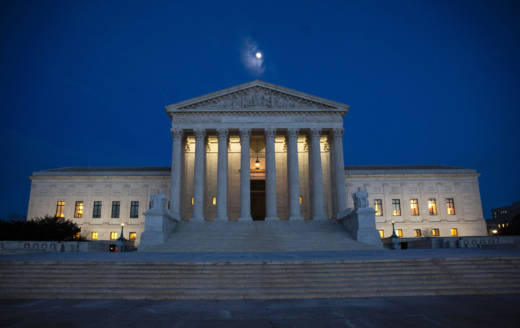In this case, Wisconsin Republicans flexed their muscles by spreading out Democratic voters into districts the party couldn't really win, or by packing them into districts so that they had way more voters than they needed to win the seat. McGhee calls it "packing or cracking" and describes the result as "wasting votes."
"The party that has more wasted votes is not winning as efficiently," McGhee said. "It’s got a lot of supporters who are not directly translating into more wins."
The case, Gill v. Whitford, is an appeal of a lower court ruling in Wisconsin that struck down the redistricting map drawn by Republicans in the state Legislature after the 2010 census, saying it was the result of "partisan gerrymandering."
The term "gerrymandering" goes back to 1812 -- and it refers to politicians drawing odd-shaped political districts to help their own party win more seats.
The question for the Supreme Court is whether gerrymandering can go too far. Can it be so extreme and partisan that it systematically disadvantages the voters of one party?
The court has taken up the question of gerrymandering several times, most recently in a 2004 case from Pennsylvania called Vieth v. Jubelirer.
The justices were split 5-4, declining to toss out Pennsylvania's map. But Justice Anthony Kennedy said he'd be open to reconsidering the notion of extreme partisan gerrymandering if there were a tool to objectively measure it.
McGhee's "efficiency gap" calculation, which he described in an amicus brief to the court, might satisfy Kennedy's concerns.
A few years ago, California voters took redistricting away from politicians and gave it to an independent, nonpartisan Citizens Redistricting Commission. Jeanne Raya from Los Angeles County is the current chair of that commission, which held hearings all over the state before drawing the lines.
Raya says the entire process was "to make sure that there was complete transparency and complete independence in the process so that the districts reflect the people who live there and give them the opportunity to elect someone who’s going to represent their interests."
Raya’s commission submitted a brief to the Supreme Court describing how California politicians were prevented from putting their own interests ahead of voters.
Former Republican Gov. Arnold Schwarzenegger is part of a bipartisan coalition urging the court to strike down partisan gerrymandering. He'll be in the courtroom Tuesday morning for oral arguments.
The Supreme Court will issue a decision in the case by the end of June -- just a few months before next year’s congressional elections. The outcome could affect which party controls Congress.
